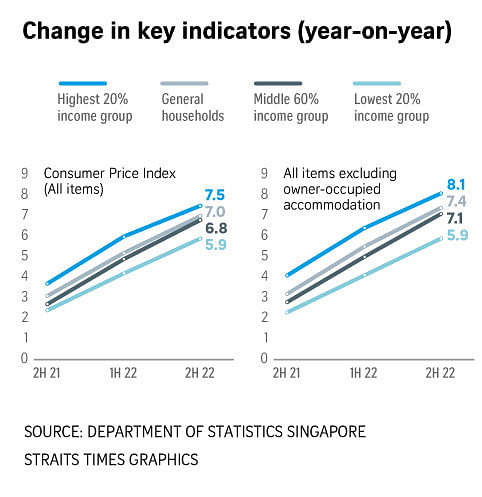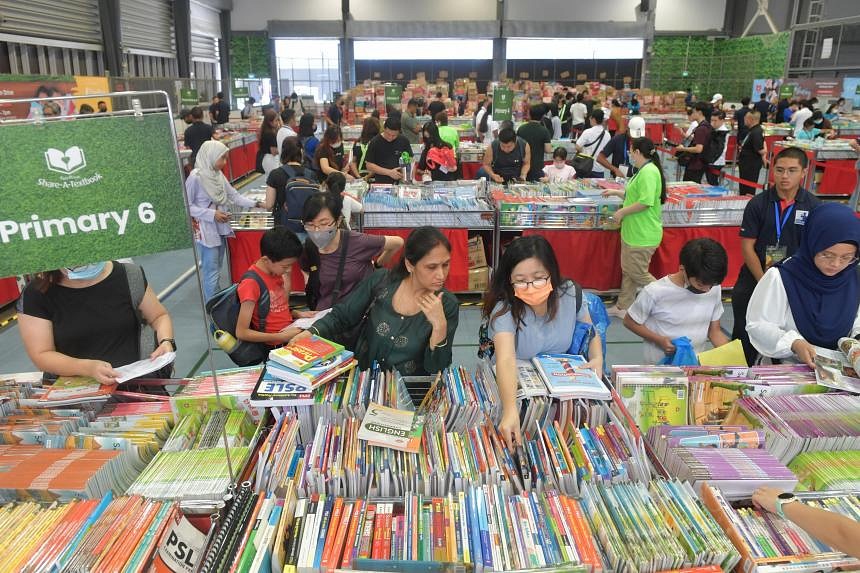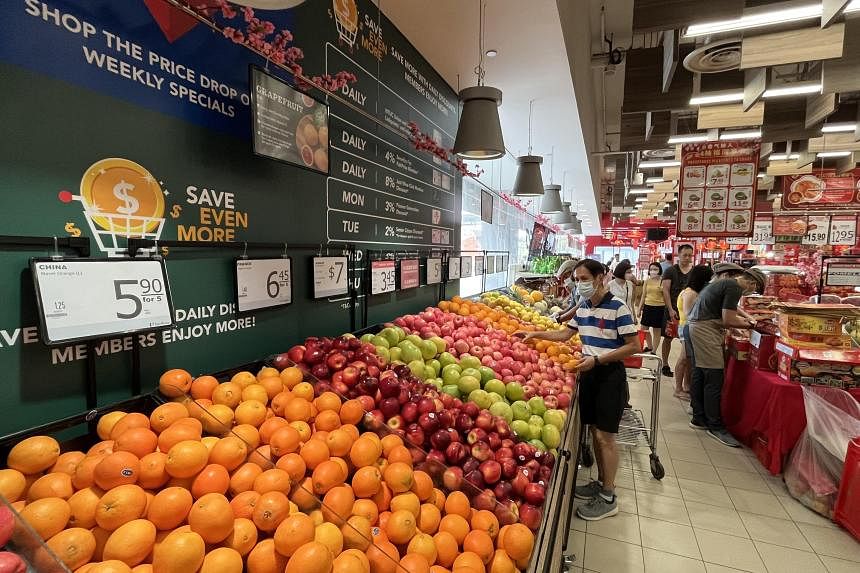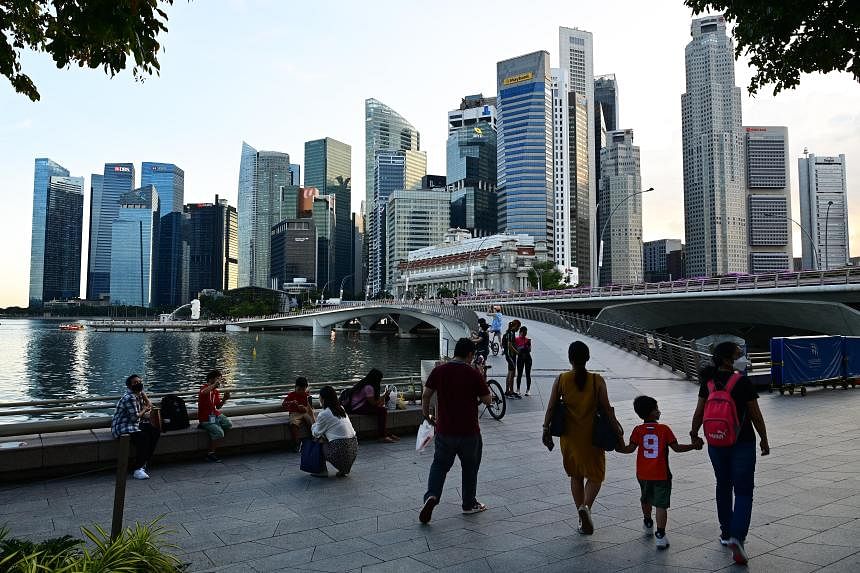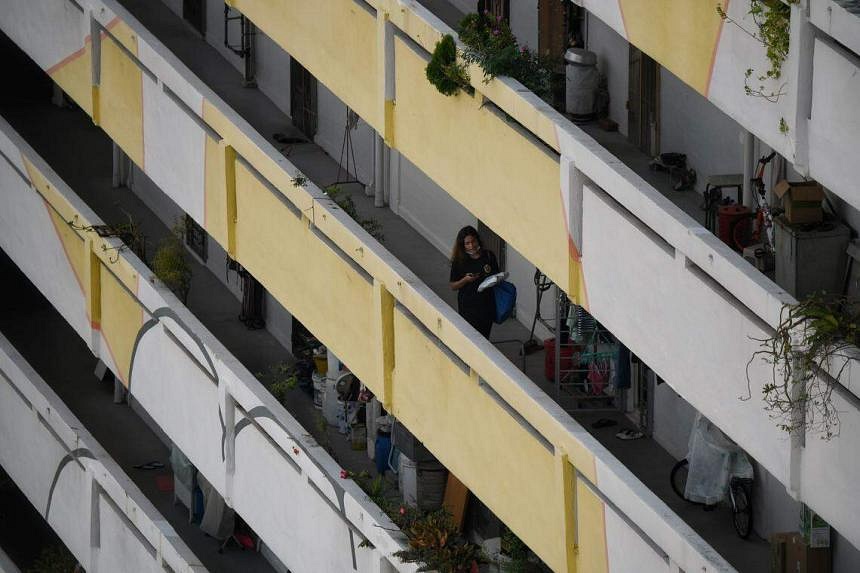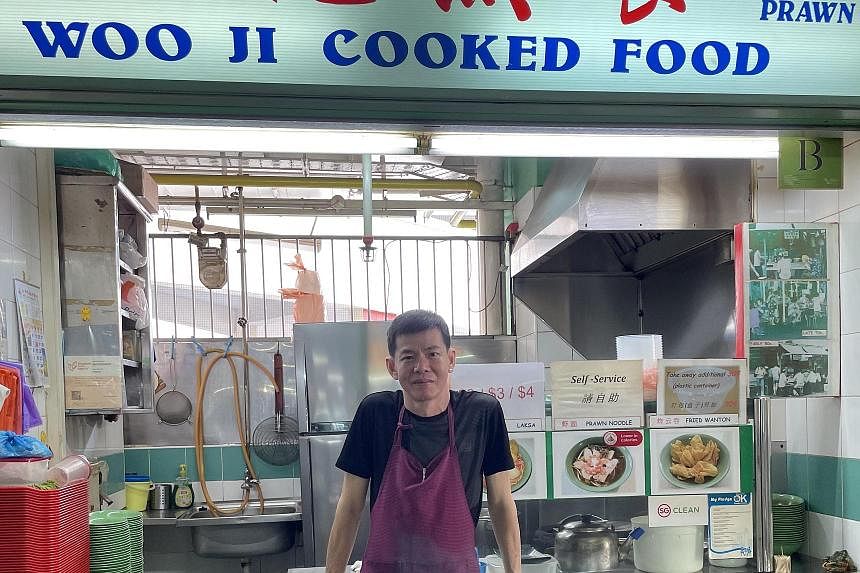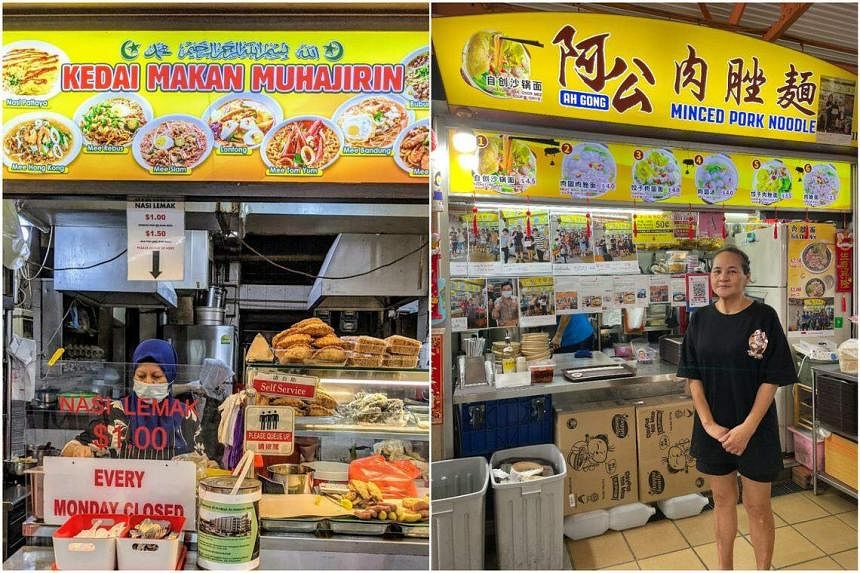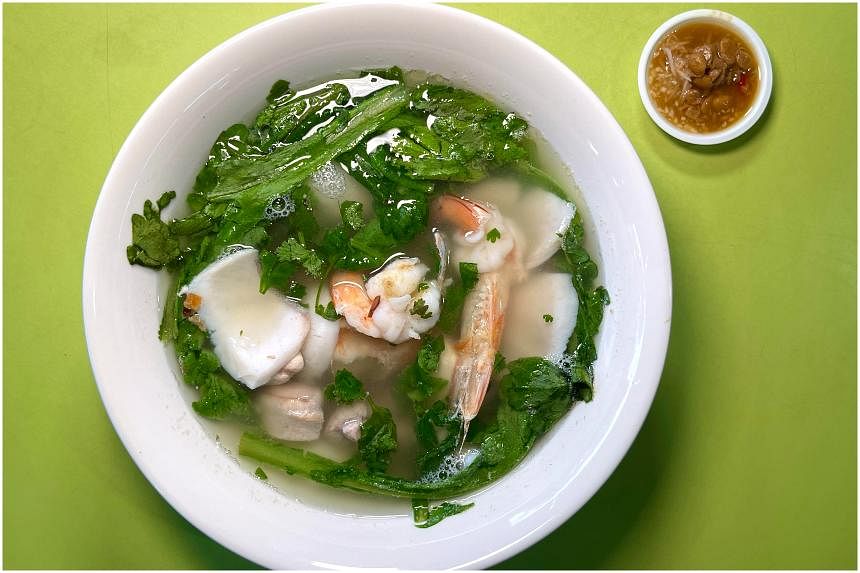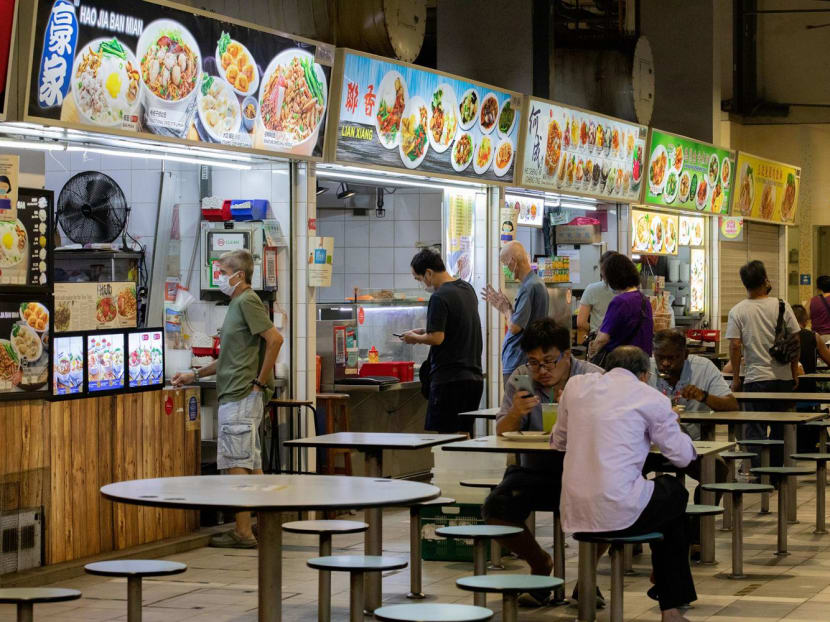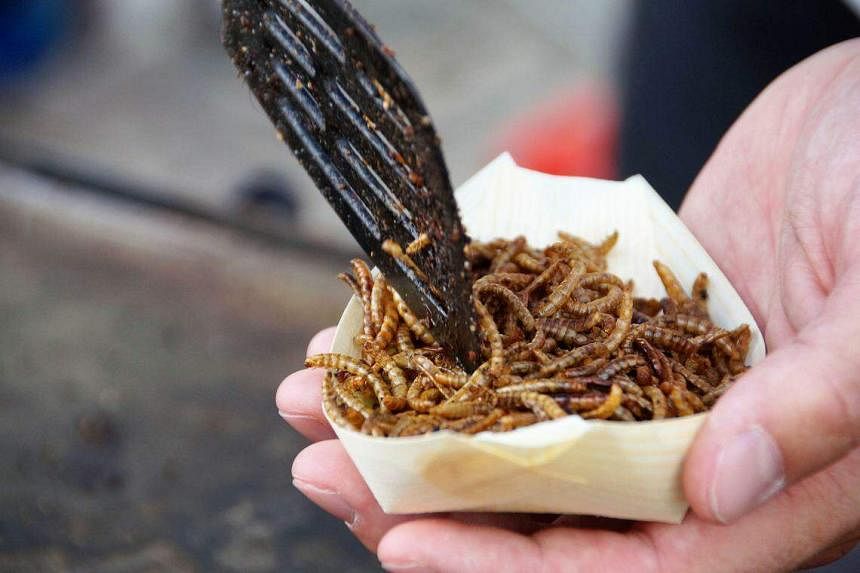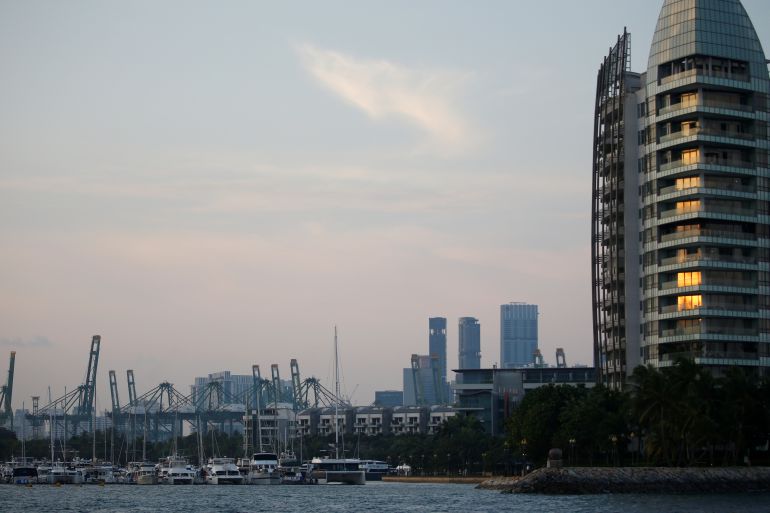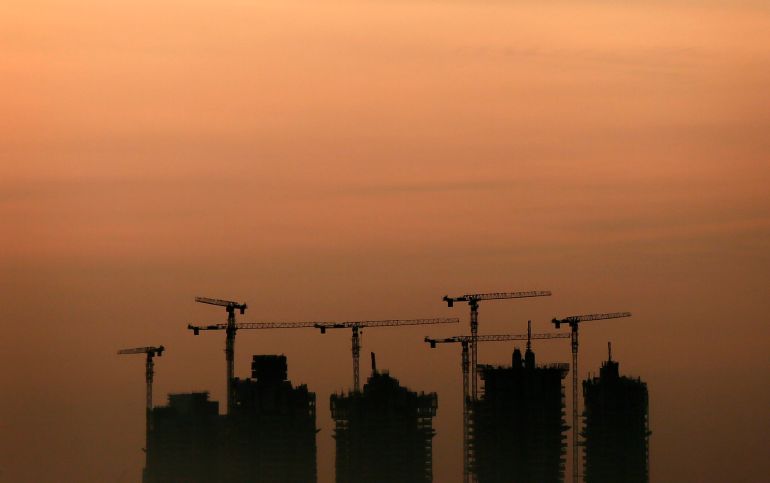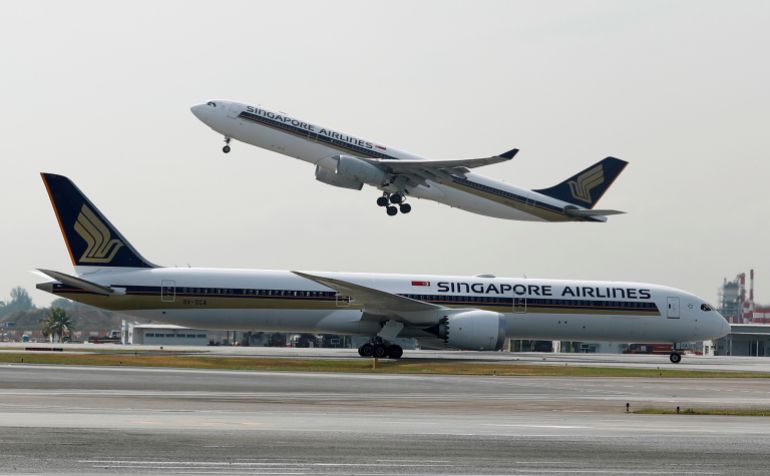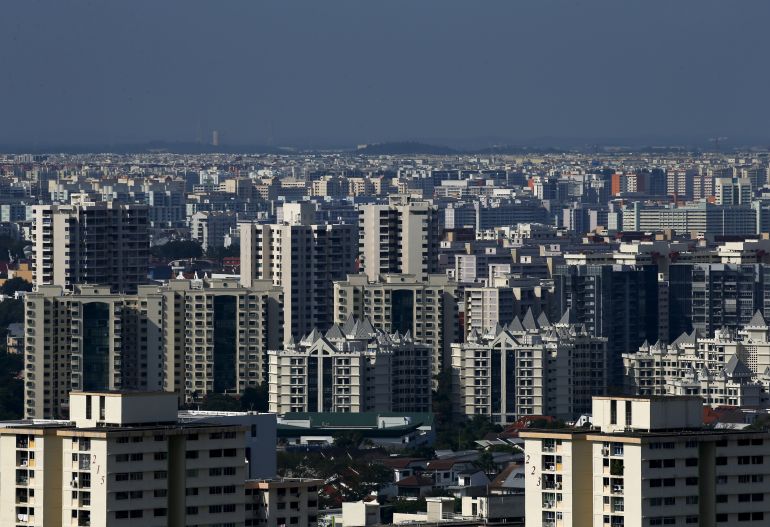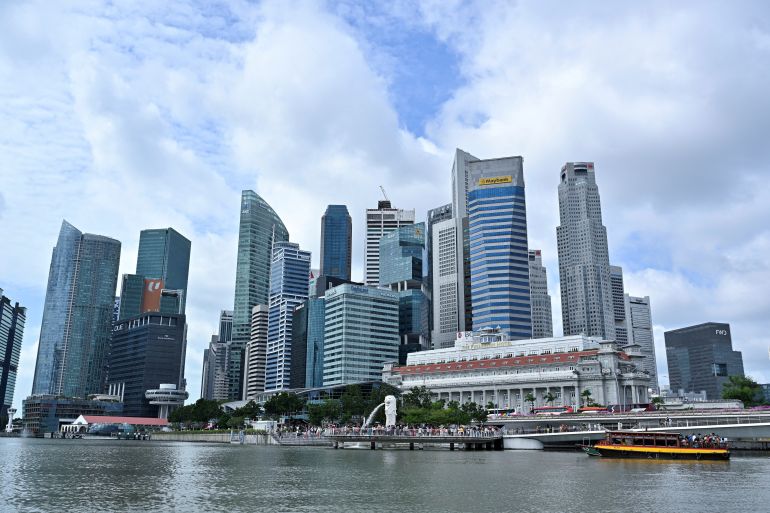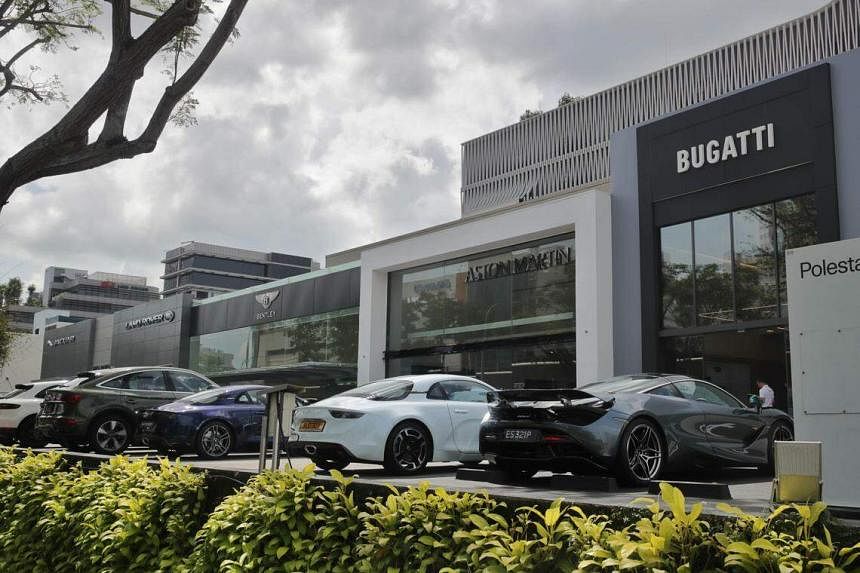So long Singapore: Expats flee city as rents go through the roof
Southeast Asian city-state is losing international talent as some expats report rent hikes as high as 80 percent.
Singapore's average rental prices surged by 30 percent in 2022, with many residents experiencing even steeper hikes [File: Feline Lim/Reuters]
By
Toh Ee Ming
Published On 20 Apr 2023
Singapore – Australian national Ben Dunn and his family consider themselves “Aussie-poreans”. He has lived in Singapore for the last 16 years and his children, aged 10 and 13, were born here.
Drawn to Singapore’s “melting pot of people and ideas”, sunny climate, and liveable environment, the Dunns enjoy soaking up the greenery at Botanic Gardens, visiting Queenstown Library and eating hawker food at the Tiong Bahru Market.
But after watching the monthly rent for the family’s condominium soar from 7,000 to 11,000 Singapore dollars ($5,242 to $8,238) in a matter of months, Dunn and his wife made the difficult decision to return to Australia when their lease ends in June.
“Since the pandemic, we’ve been thinking about how it’s the right time to return home after being away for so long,” Dunn, 51, who works in finance, told Al Jazeera.
“We love living in Singapore but with the cost of living going up and wages not rising proportionally, this rent increase will cause a serious impact.”
While there are no official figures, Dunn is among a growing pool of expats leaving Singapore because of soaring rents, prompting concerns about whether the Southeast Asian city-state is at risk of losing its allure as a regional business hub.
Average rental prices in Singapore, where about 40 percent of the population is foreign-born, surged by 30 percent in 2022 – the fastest pace in 15 years, according to data from Singapore’s Urban Redevelopment Authority.
A shortage of housing supply due to the pandemic has led to large rent increases in Singapore [im Wimborne/Reuters]
The surging prices have been blamed on a range of factors, including a shortage of housing supply due to pandemic-caused construction delays and strong demand from companies and talent to relocate to the city,
driven in part by China’s crackdowns on private industry and Hong Kong.
The number of Employment Permit and S Pass holders – the main visas issued to foreign professionals – grew from 323,500, in 2021, to 365,200, in 2022.
International and local business communities here have also raised concerns over the rising cost of residential and office spaces.
Seven in 10 foreign and local businesses are ready to relocate staff if costs do not come down, while half of expats who renewed their residential lease recently saw their rent rise by more than 40 percent, according to a survey by the European Chamber of Commerce in Singapore (EuroCham).
APAC Relocation, an international relocation company, said it has seen about 10 percent of its clientele move because of rising rents during the past five to six months.
Many expats are also choosing to downgrade from private landed properties and bigger condominiums in Singapore’s city centre to smaller apartments and even public housing in suburban areas, Unni Krishnan, relocation manager at APAC, told Al Jazeera.
Some expats are leaving Singapore due to the soaring cost of living in the city-state [Edgar Su/Reuters]
Melody, a Taiwanese national in her 30s, arrived in Singapore two years ago with a promising career in the tech industry and dreams of putting down roots in the city with her partner.
But last year, she was hit by a double whammy. She was retrenched in recent tech layoffs and the monthly rent for her two-bedroom apartment in Newton was raised from 4,000 to 6,500 Singapore dollars ($3,000 to $4,870).
She has heard similar stories of friends’ landlords raising rents by 60 to 100 percent.
For Melody, the situation presented the difficult choice to either stay on and “endure the situation with barely any savings”, or move somewhere with a lower cost of living. By the end of April, she plans to return to Taiwan.
Melody feels the current rental situation and lack of government intervention have created an unfriendly environment for mid-level expats like herself.
“It’s sad to hear these stories. To the people who come here, Singapore represents a land of opportunity, an exciting Asian business hub where you’re surrounded by diverse people, cultures and your kids grow up in an international environment,” Melody, who asked not to be identified by her real name, told Al Jazeera.
“It was a really pretty package… before all of this happened. In times like this, it makes us feel like we are so easily dispensable and just easily let go and nothing is being done to retain us.”
Likewise, Ari had leapt at the opportunity to work in Singapore. He holds a senior position in the food and beverage industry, and moved here with his wife and young daughter a year ago.
When their lease ended in January this year, the landlord raised the rent by 50 percent – from 5,000 to 7,500 ($3,747 to $5,620) – putting a substantial dent in their savings. Some of their friends were hit with rent hikes of 70 to 80 percent.
To cope, Ari and his family cut back on spending by eating out less, taking public transport whenever they could and turning off the air conditioning. While Ari considered finding a cheaper apartment elsewhere in Singapore, he was disappointed to find that even rents in far-flung locations were not immune from the hikes.
By the end of April, Ari plans to find a new job elsewhere and leave Singapore.
“It’s just really disruptive and it’s a shame that we have to leave Singapore,” Ari, who requested to use a pseudonym, told Al Jazeera.
The Singapore government has said it is monitoring the rental market closely amid concerns rising costs are putting accommodation increasingly out of reach [File: Edgar Su/Reuters]
Achieve Group chief executive Joshua Yim has witnessed companies turning to creative solutions to handle the rising costs.
Yim, whose talent acquisition company recruits workers in various fields including tech, banking and pharmaceuticals, said some multinational corporations with regional headquarters in Singapore are relocating their staff to cheaper cities like Kuala Lumpur, Jakarta and Bangkok, where they can work remotely and fly into the city-state only when necessary.
Yim has seen numerous expats leave Singapore because of escalating rents in the past six months, with others negotiating for better packages, “having done their research on Singapore”.
Still, companies these days may not be able to offer such handsome packages and housing allowances as in the past, Yim added.
While the topic has been the talk of the town in the business community, Yim said he is optimistic the situation will ease by the end of this year. He envisions the government will take steps to prevent further erosion of Singapore’s competitiveness.
Albert Tsui, executive director of advocacy and policy at the Singapore Business Federation, pointed out that disruptions in supply chains and inflation have added to business costs along with rising rents.
But while rising costs may pose a risk to Singapore’s attractiveness, companies are strongly aware that a variety of factors come into play when determining their country of choice for investment, Tsui said.
“What continues to distinguish Singapore is our ready access to global talents, robust infrastructure and the institutions that can protect the value of business assets,” Tsui told Al Jazeera.
“Singapore’s stable political climate and pro-enterprise environment also promote business sustainability, which makes us an attractive destination.”
Singapore is one of Asia’s major financial and business hubs [Caroline Chia/Reuters]
In response to concerns that soaring rents could affect Singapore’s ability to attract foreign talent, the government has insisted it is closely monitoring the property market, including the residential rental market.
“That said, global talents consider many factors besides rental prices when making relocation decisions,” National Development Minister Desmond Lee said in a response to parliamentary questions last November.
“These include Singapore’s standing as a global business hub, our strong external connectivity, our good trade links, our education and healthcare standards, and the quality of life.”
For expats like Dunn, though, the situation has made it difficult to stay on.
“We’re leaving with a heavy heart but we’re very torn about it,” he said.
SOURCE: AL JAZEERA

